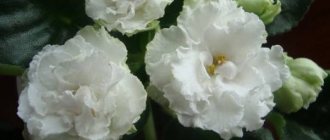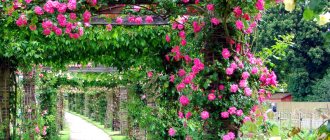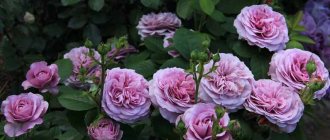Russia is a huge country with vast areas, different time zones and climatic conditions. The nature of our country is unique and beautiful. There is perhaps no other country in the world so generously endowed by nature. Our vast fields, dense forests, high mountains, deep rivers attract the attention of all nature lovers. Tourists believe that this is precisely the secret of the Russian soul.
Leaving Russia, guests (who managed to see all the natural diversity), and even more so the citizens of the country, always miss the nature of the great power. They admit that they always remember with warmth and nostalgia nightingale trills, wonderful wildflowers, what trees bloom in May and what coolness and peace the mountains give.
Spring
Spring is considered the most wonderful time of the year. In spring, nature wakes up from hibernation: trees “dress” in beautiful green outfits, flowers of different shapes and shades and give a dizzying aroma, the sun becomes gentler and warmer.
In the vast expanses of our homeland, spring is gradually coming into its own. Therefore, if you take a vacation and travel around the country to see the “spring route and its consequences,” you can experience this time of year in all its diversity. While in the south of the country all the trees begin to turn green and bloom, in the Far East there are only a few types of trees that can please residents.
Let's go on a virtual journey and find out which trees bloom in May in different parts of our country.
Kuban lands
It is known that Kuban is the breadbasket of Russia. Its fertile lands are capable of feeding the entire Kuban population, as well as generously sharing with compatriots. Bread, rice, various berries, vegetables and, of course, fruits ripen under the Kuban sun.
Kuban gardens, forests, villages and even cities change beyond recognition in the spring: the trees become lush green, bloom very beautifully and smell pleasant. If you ask: what trees bloom in April-May in Kuban, you will receive an impressive list in response. Firstly, fruit trees bloom, such as apple trees, pears, peaches, apricots, cherries, plums and many others. Secondly, non-fruit and ornamental trees: chestnut, acacia, lilac, poplar, birch, linden, willow and willow.
It is interesting that the weather in Kuban is a very capricious lady, and often she shows her “whims” to nature and all residents. There were cases when the trees were budding, but strong frosty nights still awaited them. Or, on the contrary, spring was in such a “hurry” to come that even on rare snowy April days it bloomed flowers on the trees.
Rose hip
The flowering of these bushes lasts 1-3 weeks. Pink buds with a small number of petals emit a fresh, sweet aroma. The root system grows quickly throughout the entire area. When planting, it is worth limiting the space for each bush by digging sheets of metal or slate into the ground.
Rosehip does not like groundwater located close to the surface. If it is planted in lowlands, then the flowerbed should be more than 80 cm high. In the first 2 years, feed only once in the spring - with a urea solution (2 tsp per 10 liters of water for one plant).
- Author: Zimina Tatyana
Rate this article:
- 5
- 4
- 3
- 2
- 1
(2 votes, average: 5 out of 5)
Share with your friends!
Resort areas
“Staying” still in the south, you can look into the gardens of residents of resort cities such as Sochi, Adler, Gelendzhik. Trees grow here, the fruits of which are adored by every resident of our country. The taste and benefits of summer fruits cannot be compared with anything for human health.
So, what trees bloom in May near the sea coast? This:
- magnolia;
- pomegranate (sometimes begins to bloom at the end of May, but more often in summer);
- mandarin;
- persimmon;
- azalea multicolored.
Decorative plum
Delicate pink and deep burgundy flowers will decorate the garden if you plant a decorative plum in it. A faint aroma is felt near the tree. In August, small fruits up to 3 cm in diameter appear on the branches.
The bushes are light-loving, but tolerate slight shading. The plant has little requirements for soil types, but prefers drained, neutral, loamy or slightly alkaline soil.
Moscow
Although the capital of Russia is located significantly north of Sochi, here, too, everything “comes to life” and decorates the city. Muscovites and guests of the capital who arrived in the spring know which trees bloom in Moscow in May and give it a festive look and comfort: hawthorn, chestnut, Manchurian walnut, acacia. Also in the parks you can find a lot of flowering trees such as apricot, double almond, apple trees and lilac. If the spring is hot, then linden may begin to bloom in May; if, on the contrary, the cold does not subside for a long time, poplar or willow may continue to bloom for a long time.
Despite the many buildings (a tribute to the modern metropolis), Moscow is rich in green areas. Not to mention the lands near Moscow, where city dwellers can “break out” to admire nature. During the flowering period, trees give the city a more gentle look, and a person can enjoy a piece of nature even in the concrete jungle.
Peter
The northern capital of Russia is known to everyone for its rich history, palaces and fountains. The climate there, although not as harsh as in the Far East, still rarely indulges residents with truly hot days. But few people know that in St. Petersburg there is a wonderful botanical garden that brings together “domestic” flora and “foreign guests”.
Wind, cold, rain and grayness are ordinary days for St. Petersburg, it is interesting that neither St. Petersburg residents nor guests stop loving him because of this. But it is precisely this eternal autumn mood that makes the arrival of spring a real holiday. Residents of the Northern capital are trying to find time to visit parks, gardens and find out what trees bloom in May in St. Petersburg this spring. Because due to the weather, the flowering time may differ in different years.
Walking along the streets or the St. Petersburg Botanical Garden, you can admire and then tell your friends and acquaintances what trees bloom in May in the city. These are such as:
- sakura;
- Apple tree;
- cherry;
- horse chestnut;
- rose tree;
- bird cherry;
- alder.
Bird cherry
The bright aroma of this tree is known to almost everyone. Small buds of white or slightly pinkish tint cover the branches in a dense layer in spring.
One of the main conditions for good fruiting and flowering is protection from late spring frosts. It is quite difficult to save branches from frostbite, but bird cherry can be planted near fences or other shelters. This way it will be possible to protect the bushes from cold winds and shedding of buds.
Far East
The next stop on the virtual journey “In the Footsteps of Spring” is the Far East. The climate of this part of the country, as they say, is not for the faint-hearted and heat-loving. For example, in the village of Oymyakon in winter the temperature drops to –50 °C, and on a summer day it can rise to +30 °C (and at night drop by 20 degrees).
But, of course, not all territories of the Far East are so snow-covered, and spring is coming here.
Let's find out which trees bloom at the end of May in the Far East? We can meet here:
- Mongolian oak;
- Amur linden;
- Amur velvet;
- Calopanax sevenloba;
- Aralia Manchurian;
- Manchurian apple tree;
- small-fruited alder;
- Maksimovich cherry;
- Daurian birch;
- Scots pine.
How trees bloom
You don't have to be a botanist to love nature. Sooner or later, everyone gets tired of the hustle and bustle of work and strives to get at least a little closer to nature. Especially in spring, people try to find time and go to the park, mountains or to the country. Fortunately, in our country May is very generous with weekends, so almost everyone has this opportunity.
A person who is far from in-depth knowledge of botany is attracted and surprised by trees covered with flowers. Often we enjoy the view without even knowing the correct name of the tree. Let's do a little education and find out:
- Which tree blooms with white flowers in May? A lot of trees bloom with white flowers, of course, they all differ in size, shape and aroma. For example, an apple tree blooms with large white and pink flowers that cover the entire tree with a lush cap. Bird cherry flowers are small, white, they seem to be put on a rod, hanging down with a brush. On thin reddish twigs of cherries, 3-5 relatively large white (five-petalled) flowers are collected. Some types of magnolia also bloom with white, huge flowers.
- How do coniferous trees bloom? The flowers of these trees are cones and spikelets. For example, a pine tree blooms with male flowers - yellow spikelets, and female flowers - small pink cones.
Everyone will agree: weekends in nature are also exhausting (by the way, no more than shopping). But when you come to work on Monday after the May holidays, the first thing you want to say to your colleagues is: “Oh, what trees bloom in early May!”
Choosing herbaceous plants in white colors
The White Garden is beautiful at any time of the year. You just need to choose the right plants to decorate your site, taking into account the assortment available in your arsenal and the climatic conditions prevailing in your area.
One- and two-year-olds
In the plant world, white is not uncommon. We see it every spring, enjoying the blossoming of trees, under the canopy of which picturesque meadows dotted with snowdrops are hidden.
Primroses are the first to greet the fine days, basking in the gentle spring rays: snow-white crocuses and miniature double galanthus bloom like bright stars on the bare ground.
A little later, the bulbous primroses will be replaced by delicate lilies of the valley, decorated with miniature light bells, and cute Alba primroses.
In spring, alyssum, which is also known as marine lobularia, will be an elegant decoration for a rock garden or alpine slide. An unpretentious, low-growing annual with small oval leaves and tiny flowers collected in dense clusters, it will delight you with flowering throughout the growing season.
Alyssum, belonging to the Tetra schneereiben and Carpet of snow varieties, looks unusually beautiful, the caps of which gently sway when the wind blows.
Having planted tulip bulbs in the fall, you can enjoy the beauty of these marvelous flowers in the spring months. Among tulips, the petals of which are painted in white shades, the following varieties are famous for their special decorativeness: White Parrot, White Marv, White Triumphator, fringed Daytona.
In early May, whole glades will bloom with ground covers: perennial carnation and Caucasian arabis. Against the background of delicate spring greenery, the Turkish carnation will look interesting, the fringed-cut petals of which spread a subtle, delicate aroma throughout the garden.
Among the varieties of Turkish carnations, many gardeners especially love Albus or Dianthus plumarius for their decorativeness and ease of care.
Ground covers will pass the baton of flowering to herbaceous peonies and irises. Against the background of green foliage, handsome irises with corrugated flowers of the following varieties look unusually impressive: Jayceetee Grosvenor, Arctic Express, Sword-shaped, Mesmerizer Byers.
Beloved by many gardeners, violet is famous for its variety of shades. But thanks to the efforts of breeders, monochromatic varieties, for example, “White Crystal,” can also be found on sale.
Ageratum will delight you with flowering from July to October. Decorated with dense fluffy inflorescences, it will retain the color of the flowers until the first frost.
Floral arrangements in white tones look great against the backdrop of silver and blue-gray conifers with their needle-like foliage
As a background for a flower arrangement, you can safely choose: thuja, spruce, brilliant cotoneaster. Silvery conifers can highlight the cool elegance and sophistication of white-flowering plants.
Perennial flowering species
The middle of summer is rightfully given over to the power of blooming roses. You can safely dedicate the entire garden to roses, and it will only benefit from this: a picture featuring these unusually beautiful flowers turns out picturesque, bright and memorable.
Roses look equally impressive both in the design of flower beds and borders, and as hedges dividing the area into zones
White roses look very beautiful as elements of vertical gardening. Climbing roses can be planted on trellises, arches and pergolas, creating green covered arcades that give a pleasant feeling of security. The following varieties are perfect for decorating alpine slides: Swany, Kent, Sea Foam.
Perfect for a white garden:
- Bourbon roses Boule de Neige with fragrant full-double flowers;
- polyanthus roses Yvonne Rabier with medium-sized flowers;
- musk roses Trier and Prosperity with fragrant flowers in creamy white shades.
In the carpet flower garden, be sure to plant chickweed, chickweed and saxifrage. Ground cover varieties with miniature flowers look advantageous in combination with decorative white gravel.
Recent Entries
Lilac perennials that are beautiful, compact and do not crowd out other plants Why when buying seedlings you should not take the sellers’ word for it and how to determine the age of the plant using 3 signs Tomato seedlings have turned purple or whitish: why the color has changed and how to save the plants
When forming a monochrome flower bed, focus on the range of textures in the plant composition. Let the flower garden be filled with plants that differ noticeably in the shape of their leaves.
If, when creating a variegated flower bed, such texture will go unnoticed, then in a monochromatic flower garden it will catch the eye, like a “3D” effect
Aconites and large-flowered daisies can transform even the most inconspicuous corners in the garden. These amazing crops are ideal for creating landscape gardens with a forest character, which are characterized by mystery and mystery.
Daisies will bloom in the summer months, and large aconite inflorescences will decorate the garden with majestic “candles” at the end of the season.
Don't forget to complement the flower garden with cute daisies with pompom baskets of The pearl variety and fragrant Snow ball petunias
Petunias are so beautiful in themselves that when creating a picturesque landscape design, you don’t need to be particularly sophisticated in coming up with complex compositions. Plants will look great both in flower beds paved with stones and along fences.
By choosing hanging varieties, you can decorate hanging pots with flower garlands. Floral fragrant “clouds” will be a worthy decoration for a gazebo, veranda or terrace.
The grayish shades of the openwork foliage of Cineraria maritima, lovingly referred to by gardeners as “silver dust”, will help to dilute the white “blanket” in the flower garden.
Among the popular varieties of seaside cineraria, it is worth highlighting: Cirrus with oval leaves and Silver Dust with carved foliage. The silvery tint and carved leaves of the plant can favorably emphasize the color of the flowers and set off the greenery that frames them.
The beautiful lilies deserve special attention. Royal trumpet lilies, Asian and oriental hybrids can easily tolerate mid-latitude conditions.
Lilium candidum is one of the oldest species of white lily, to which Hippocrates attributed divine origin and healing properties.
Airy snow-white clouds in a sunny flower bed form numerous gypsophila flowers. For the lightness and weightlessness of the miniature, bead-like flowers, gardeners nicknamed the ground cover “the bride’s veil.” Among the decorative varieties, the most attractive are Bristol Fairy with double white flowers and Monstrosa.
The branched stems of low-growing gypsophila, reaching a height of 20-50 cm, are decorated with paniculate inflorescences of light shades, framed by graceful foliage
Lush flowering in white tones in the summer months will be ensured by:
- calimeris notched;
- bellflower Grandiflora Alba;
- catnip Nepeta x faassenii;
- delphinium Casa Blanca;
- Silver Queen wormwood.
With the onset of autumn, you can maintain your palette using the “queens of the autumn ball” - chrysanthemums. It is believed that unusually beautiful flowers can prolong life. But this perennial is revered among gardeners for its ability to revive the garden in the autumn, making it play with new colors even when there is already snow on the ground.
According to Chinese legend, the reigning monarch of ancient times was able to live for more than seven hundred years thanks to the dew from chrysanthemums he drank.
The perennial aster is loved by many gardeners for its delicate flowers, which, like the strokes of an artist’s brush, paint the garden in light shades. Its snow-white hemispheres look great not only in a flowerbed, but also in a bouquet. The varieties of tall aster Agleni, whose branches are abundantly strewn with small white flowers, and Weisser Schirm deserve special attention.
The delicate panicles of astilbe will be a worthy complement to the delicate flowers of the aster. Spreading branches with spectacular inflorescences feel comfortable even with slight shading.
Among the most famous varieties, it is worth highlighting “Deutschland” with white airy inflorescences and Schtrausenfeder with fluffy diamond-shaped panicles
In late summer, an excellent addition to a white garden will be:
- Japanese anemone Wirbelwind;
- phlox paniculata White Admiral;
- yarrow Achillea decolorans;
- Echinacea purpurea Alba.
All of the proposed types of crops are famous for their abundance of flowering and ease of care. Therefore, it will not be difficult to compose compositions adhering to the flowering dates. In case of difficulties, you can always play it safe by adding variegated leaves to your compositions. Heucheras, comfrey, hostas, and lungworts can successfully cope with this task.
The white-edged hosta can become the “princess” of any flower bed, giving the composition a touch of sophistication and elegance.
Hostas forming airy “cushions” will visually soften the transitions between colors, bringing harmony to the composition. Variegated foliage interspersed with blue, gray and silver will highlight the whiteness of the delicate flower petals.
Trees versus people
People are waiting for spring, its warm rays of sunshine, which will drive away the dullness, melt the ice and awaken nature. How wonderful it is to go outside and inhale the aroma of apple or cherry! But unfortunately, not all people enjoy spring, and not all trees are so harmless in the wonderful time of flowering.
Every year more and more people suffer from allergies to tree pollen. Agree, it is difficult to maintain a high spring mood when you have a headache, itchy and watery eyes, an itchy nose and constantly want to sneeze.
The population suffers especially severely in May from the flowering of the following trees:
- and you;
- oak;
- ash;
- maple;
- pine trees;
- ate;
- hazel;
- poplars.
If representatives of these “dangerous” species are present in large quantities in your region, and you are susceptible to allergies, it is better for you to take a vacation and travel or stock up on the necessary medications.
Growing and care
A catalpa that has good conditions will quickly begin to produce gorgeous leaves and flowers. To maintain the healthy development of a tree, it is not enough to regularly water it, feed it, and prune it if necessary.
Watering
Young catalpa trees need to be watered frequently so that the soil around the roots does not dry out. Old trees tolerate drought well, but if the drought lasts too long, it is better to water the plant.
Trimming
It is necessary to prune the catalpa when leaf buds appear on the branches - from May to June. Pruning should be done in dry, warm weather so that the cut areas heal quickly.
Attention! You should not prune the catalpa too early in the spring; sudden frosts can negatively affect the condition of the plant, leading to its weakening and disease.
Simply shortening the shoots can lead to a not very aesthetically pleasing broom shape. It is better to cut the top at the height of the main branches, which the plant tolerates well.
Catalpa is trimmed to:
- remove diseased, old branches that can become an obstacle to developing young branches and inflorescences;
- although the catalpa is considered a frost-resistant tree, individual branches may freeze, they must be removed so that the tree is not attacked by diseases and pests;
- give the crown the desired shape;
- strengthen young branches, stimulate their thickening.
Sanitary pruning can be combined with crown molding. Then the tree will grow freely and look great.
Fertilizer
Catalpa needs regular feeding:
- in spring (compost, vermicompost or multicomponent fertilizers);
- in the fall (compost or preparations rich in magnesium and potassium).
Sprinkling the soil around the tree trunk with rotted manure in the fall is ideal; the created layer will additionally protect the roots from freezing.
Excessive fertilization should be avoided, otherwise the plant will end its growing season late. In such a situation, the shoots will not be able to become woody before winter and will become susceptible to frost.
Autumn care, preparation for winter
Unfortunately, catalpa, especially when young, is not a completely frost-resistant plant. But it is possible to grow catalpa in the Moscow region, Vladimir region, and in the middle zone with appropriate care. An adult catalpa 7 meters high grows near the biology department of Moscow State University in Moscow. According to gardeners, in the north of the Moscow region, unripe shoots often freeze slightly, they need to be pruned, and the tree begins to bloom when it grows to 3 meters.
For the first few years, it is advisable to cover young trees during the winter with non-woven materials or straw mats. Freezing of roots is the biggest threat to a young tree. You can create a mound of shredded bark around the trunk of the plant.
It is recommended to bleach the trunks of old trees before frost, like fruit trees. Harsh sunlight and frost at the same time can cause cracking of the bark.
Diseases and pests
Catalpa is quite resistant to pests, but fungal diseases pose a serious threat to the plant, which in extreme cases can destroy the tree. Plants are susceptible to mold attacks.
It is important to notice the symptoms in time, identify the disease, and not waste time. The earlier the disease is noticed, the greater the chance that after applying appropriate measures (chemical) the plant will return to normal and be able to recover.
Of the fungal pathogens, the most dangerous are the fungi that cause verticillosis. A suspicious symptom is yellowing of leaves and shoots. A plant infected with verticillium is not suitable for cultivation. A diseased tree must be removed quickly so that it does not infect other plants.
When the crown begins to turn yellow, you need to inspect the leaves. If brown spots appear on the outside of the leaf, the tree is infected with catalpa leaf spot. A characteristic symptom is that the tree begins to lose leaves. It is necessary to spray with antifungal drugs. Appropriate prevention will help avoid the disease - it is important to rake fallen leaves in the fall and carry out thinning pruning.
All fungal diseases manifest themselves under unfavorable weather conditions - high air humidity. To minimize the risk of pest infestation, it is important not to leave fallen leaves under trees in the fall.
Peach aphids are the most common pest that affects catalpas. A symptom of the appearance of aphids is that the leaves suddenly begin to curl and change their natural shape. After a thorough inspection, you can notice green pests, 2.5 mm long. In the case of peach aphids, an appropriate insecticide must be applied quickly.
Trees for people
Nature does nothing thoughtlessly or to the detriment of humans. It is difficult to find anything in the world as comprehensive and balanced as Mother Nature. So trees, while causing harm to some allergy sufferers with their blooms, still bring irreplaceable benefits to humanity as a whole.
We also know from school courses that trees are living beings and what is their role in human life:
- climate, agricultural land, water and air purity directly depend on trees;
- the forest and trees protect the animal world;
- trees are a source of material resources used in construction and production;
- human diet and health cannot do without trees, since their fruits, flowers, juice, leaves, roots and bark are used in gastronomy and medicine;
- The culture of the inhabitants of many cities, villages and even the peoples of countries necessarily concerns trees and forests.
From childhood we are taught to take care and protect trees. Planting a tree means doing a good and important deed in your life. And admiring the beauty of trees blooming in spring is a very pleasant, calming activity that gives strength and hope.
Reproduction
The easiest way to propagate catalpa is to sow seeds in the spring in a greenhouse and grow seedlings. Some varieties are propagated by grafting - budding.
Catalpa grafting is used to produce smaller trees. Dwarf varieties of catalpa have a height of 3-5 m. Trees obtained by grafting do not have flowers or fruits. An example of a dwarf variety is “Nana”.
Grafted seedlings with a high stem











